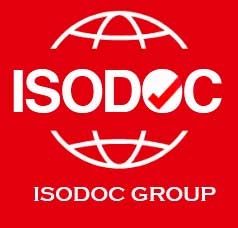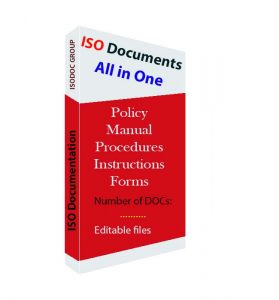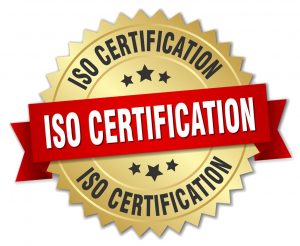ISODOC GROUP is an ISO consultancy group with 20 years of experience in implementing ISO standards. With the expertise of its professionals, the group stands prepared to assist organizations in developing and implementing management systems (MS) to ensure both immediate and long-term success.
We will assess your organization’s processes and assist you in designing, developing, and implementing a Management System (MS). We specialize in utilizing best practices from various industries to provide a well-balanced Management system (MS) solution for our customers.
What are ISO consultancy duties?
What is an ISO consultancy service?
ISO consultants assist companies in meeting the requirements of ISO standards, ultimately leading to ISO certification. Consequently, they are responsible for preparing the necessary documentation, training the company’s employees, and monitoring the effective implementation of the management system. After the system is set up, the consultant conducts the internal audit involving the internal team.
Who is the ISO Consultant?
An ISO consultant is an individual or organization offering consulting services related to international standards (ISO) to organizations. ISO consultancy involves a comprehensive analysis by the consultant of the organization’s processes, procedures, and activities in each function. They then align them with international standards to enhance effectiveness and efficiency.

What is a Gap analysis?
A gap analysis is a quick and low-cost survey of a managerial system that is generally conducted with a checklist that determines the differences (gaps) between an organization’s current management system and the requirements of the related international standard (ISO).
What activities does management system design include?
Designing a management system is a process that develops the processes, procedures, internal audit checklists, instructions, and forms that lead to the establishment of a management system for organizations.
What is an implemented management system?
What is the ISO Documentation?
ISO Consultancy and training;
ISO consultancy and training involve providing expert guidance, support, and educational programs to organizations seeking to implement ISO standards effectively. Consultants work closely with organizations to assess their current practices, identify areas for improvement, and develop tailored strategies for implementing ISO standards. Training programs educate employees at all levels about ISO standards, their requirements, and best practices for compliance. Through consultancy and training, organizations can enhance their processes, improve quality, and achieve ISO certification.
Conducting the processes of the management system under the guidance of ISO consultancy;
Management system processes include inputs, operations, activities, outputs, and resources that the process manager must be able to complete activities while considering process risks and less consumption of resources.
In the first step, process managers provide a plan (P) that specifies tasks, procedures, schedules, responsibilities, resources, targets, and controls, then teams perform activities (D).
Then In the next step, the outputs are controlled according to a defined program (C) to ensure compliance with the requirements, which leads to the following two results:
Conformity; if the results of outputs are conformity, the organization’s approach is the continual improvement for increasing the outputs of the process.
Nonconformity; If the outputs of the process are nonconformity, the organization’s approach is the corrective action to solve the problems.
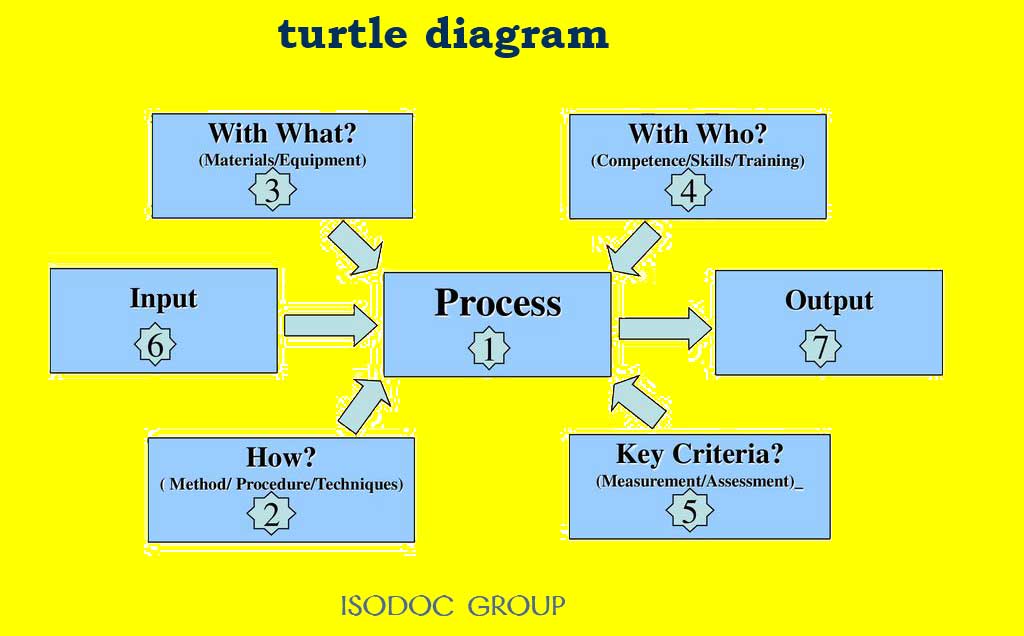
The stage of conducting the internal audit-ISO consultancy;
ISODOC Documentation
As an iso consultant, ISO DOC provides a collection of ISO documentation toolkits such as procedures, quality manuals, process flow charts, work instructions, checklists, and forms in Word format for download. You can improve your business with our ISO 9001 documents.
“As an ISO consultant, ISO DOC offers a range of ISO documentation toolkits, including procedures, quality manuals, process flow charts, work instructions, checklists, and forms in Word format for download. Enhance your business with our ISO 9001 documents.”
With minor changes based on the client’s organization, we have implemented our ISO 9001 documents in many industrial and service companies, which has led to the registration of ISO 9001 certification.
What kind of organizations is this toolkit of documents suitable for?
This documentation toolkit is appropriate for small and medium-sized organizations that desire to develop their management system without ISO consulting costs.
What is the advantage of downloading this toolkit for the organization?
Through this strategy, organizations succeed in improving the knowledge of the organization’s experts while reducing the costs of ISO implementation.
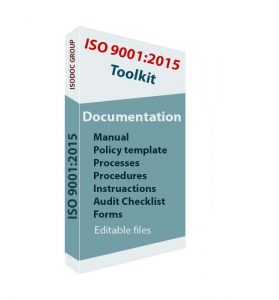
ISO 9001:2015 Documentation Toolkit
The documentation in the quality management system ISO 9001 toolkit includes templates for the quality policy, quality manual, and processes (17), encompassing core, support, and managerial processes, along with procedures (18) and instructions (5).
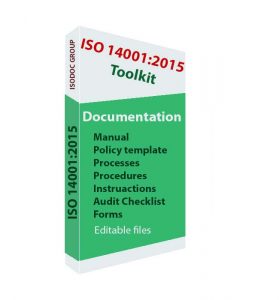
ISO 14001:2015 Documentation Toolkit
The documentation in the environmental management system ISO 14001 toolkit includes templates for the environmental policy, environmental manual, and processes (6), which encompass core, supporting, and managerial processes, along with procedures (13) and instructions (1).
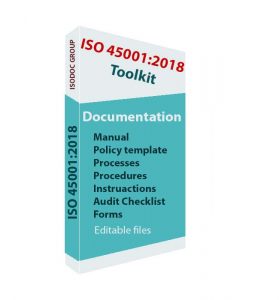
ISO 45001:2018 Documentation Toolkit
The documentation in the occupational management system ISO 45001 toolkit contains templates for the OH&S policy, the OH&S manual, and processes (11) that encompass core, support, and managerial processes, as well as procedures (18) and instructions (1).
Free ISO Documentation Toolkit
Download samples of our free ISO 9001:2015 documentation including procedures, instructions, and forms on the free ISODOC page. We have also provided sample documents of ISO 14001:2015 and ISO 45001:2018 for free download.

ISO Procedures
ISO (International Organization for Standardization) procedures refer to the documented steps or guidelines that an organization follows to comply with ISO standards. ISO standards cover a wide range of areas including quality management, environmental management, information security, and occupational health and safety.
Here’s a general outline of the steps typically involved in developing ISO procedures:
Identify Applicable ISO Standards:
Determine which ISO standards are relevant to your organization’s operations and objectives. This could include ISO 9001 for quality management, ISO 14001 for environmental management, ISO 27001 for information security, etc.

What is the purpose of Gap Analysis?
A gap analysis is a process used to compare an organization’s current practices, processes, and performance against desired standards or objectives, such as those outlined in ISO standards. The purpose of a gap analysis is to identify areas where the organization falls short of meeting these standards or objectives, highlighting gaps that need to be addressed for improvement. By conducting a gap analysis, organizations can pinpoint areas for improvement, develop action plans to close these gaps, and ultimately work towards achieving their goals and meeting ISO requirements. Assess your current processes, procedures, and systems against the requirements of the relevant ISO standard. Identify areas where your organization needs to make improvements or implement new procedures to achieve compliance.
Procedure Development:
Develop documented procedures to address the requirements of the ISO standard. Procedures should clearly outline the steps to be followed, the responsibilities of personnel, required resources, and any other relevant information.
Implementation of ISO standards:
Implementation of ISO standards involves adopting and applying the guidelines and requirements outlined in ISO standards within an organization to improve quality, efficiency, and performance. Roll out the new procedures across the organization. This may involve training employees on the new processes, updating existing systems, and communicating changes effectively.

Monitoring and Measurement:
Monitoring and measurement refer to the processes of observing, tracking, and evaluating activities, processes, or outcomes to ensure they meet predetermined criteria or standards. Establish mechanisms for monitoring and measuring the effectiveness of the implemented procedures. This could include regular audits, inspections, performance indicators, and customer feedback.
Continuous Improvement:
Continuous improvement is the ongoing process of making incremental enhancements to processes, products, or services to achieve better outcomes over time. Use the results of monitoring and measurement activities to identify opportunities for improvement. Continuously review and update procedures to ensure they remain effective and aligned with organizational objectives.
Documentation and Records:
Records of ISO standards typically refer to documented evidence that demonstrates compliance with the requirements outlined in ISO standards. These records may include various forms of documentation, such as procedures, work instructions, forms, audit reports, meeting minutes, training records, and any other documentation necessary to demonstrate conformity with ISO standards. Keeping accurate and organized records is essential for maintaining compliance and facilitating audits or assessments. Maintain comprehensive documentation of all procedures, records, and evidence of compliance with ISO standards. This documentation is crucial for audits and certifications.
External Audit and Certification:
The maintenance of management systems by ISO consultancy firms:
Once certified, continue to maintain and improve your ISO procedures to ensure ongoing compliance and drive continual improvement within the organization.
It’s important to tailor ISO procedures to the specific needs and context of your organization, ensuring they are practical, effective, and aligned with your business objectives. Additionally, involving employees at all levels in the development and implementation process can help foster ownership and commitment to compliance with ISO standards.
ISO standard requirements cover quality management principles such as customer focus, leadership commitment, people involvement, process approach, continuous improvement, evidence-based decision-making, and relationship management. These requirements are designed to help organizations maintain consistent quality and increase customer satisfaction through effective quality management systems.
- Quality Policy
- Quality Manual (not always mandatory but recommended)
- Documented Procedures for control of documents and records
- Quality Objectives
- Records of Training, Competence, and Awareness
- Records of Monitoring and Measurement of Processes
- Records of Customer Satisfaction and Feedback
- Corrective Action Reports
- Preventive Action Reports
- Internal Audit Reports
- Management Review Meeting Minutes
ISODOC GROUP has developed an ISO standard documentation toolkit aimed at assisting organizations in establishing and maintaining an effective quality management system aligned with ISO 9001 requirements. Such a toolkit typically includes templates, guidelines, and other resources to facilitate the documentation process and ensure compliance with ISO standards. This can be valuable for organizations seeking ISO 9001 certification or looking to improve their existing quality management system.

An ISO 9001 certification is a formal recognition awarded to organizations that demonstrate compliance with the requirements of the ISO 9001 standard, which pertains to quality management systems. This certification signifies that an organization has established and implemented effective quality management practices to consistently meet customer requirements and enhance customer satisfaction.
To obtain ISO 9001 certification, an organization typically undergoes a thorough assessment by an accredited certification body. This assessment involves an audit of the organization’s quality management system to ensure it meets the standards set forth in ISO 9001. If the organization’s system is found to be in compliance, it is awarded ISO 9001 certification, which is typically valid for a specific period, subject to periodic surveillance audits to ensure ongoing compliance.
ISO 9001 certification is internationally recognized and can enhance an organization’s reputation, improve customer confidence, and create opportunities for new business, particularly in industries where adherence to quality standards is essential.
What is the duration of validity for an ISO certificate?
The duration of validity for an ISO certificate typically varies depending on the certification body and the specific ISO standard being certified against. However, ISO 9001 certificates commonly have a validity period of three years. After this initial certification, organizations undergo regular surveillance audits to ensure ongoing compliance.
What are the conditions for receiving ISO certificates?
The conditions for receiving ISO certificates typically involve the following steps:
- Implementation of a Quality Management System (QMS): Organizations must establish and maintain a QMS that conforms to the requirements of the relevant ISO standard (e.g., ISO 9001). This includes documenting processes, procedures, and policies to ensure consistency and effectiveness in meeting quality objectives.
- Compliance Assessment: An accredited certification body conducts an audit to assess the organization’s QMS against the requirements of the ISO standard. This audit may involve document reviews, on-site inspections, and interviews with personnel to verify compliance.
- Corrective Actions: If any non-conformities are identified during the assessment, the organization must take corrective actions to address them effectively. This may involve implementing changes to processes, procedures, or practices to ensure compliance with ISO standards.
- Certification Decision: Upon successful completion of the assessment and resolution of any non-conformities, the certification body decides whether to issue the ISO certificate. If the organization meets all requirements, the certificate is issued, indicating compliance with the ISO standard.
- Surveillance Audits: After certification, the organization undergoes periodic surveillance audits to ensure ongoing compliance with the ISO standard. These audits typically occur annually or as specified by the certification body.
By meeting these conditions, organizations can receive ISO certificates, demonstrating their commitment to quality management and adherence to international standards.
What is an iso audit surveillance?
| It refers to a periodic audit conducted by a certification body to ensure that an organization’s quality management system continues to comply with the requirements of the relevant ISO standard (such as ISO 9001). These surveillance audits are typically performed after the initial certification audit and at regular intervals thereafter, usually annually. The purpose of these audits is to verify that the organization’s quality management system remains effective and is being maintained and improved as necessary. |
 |
